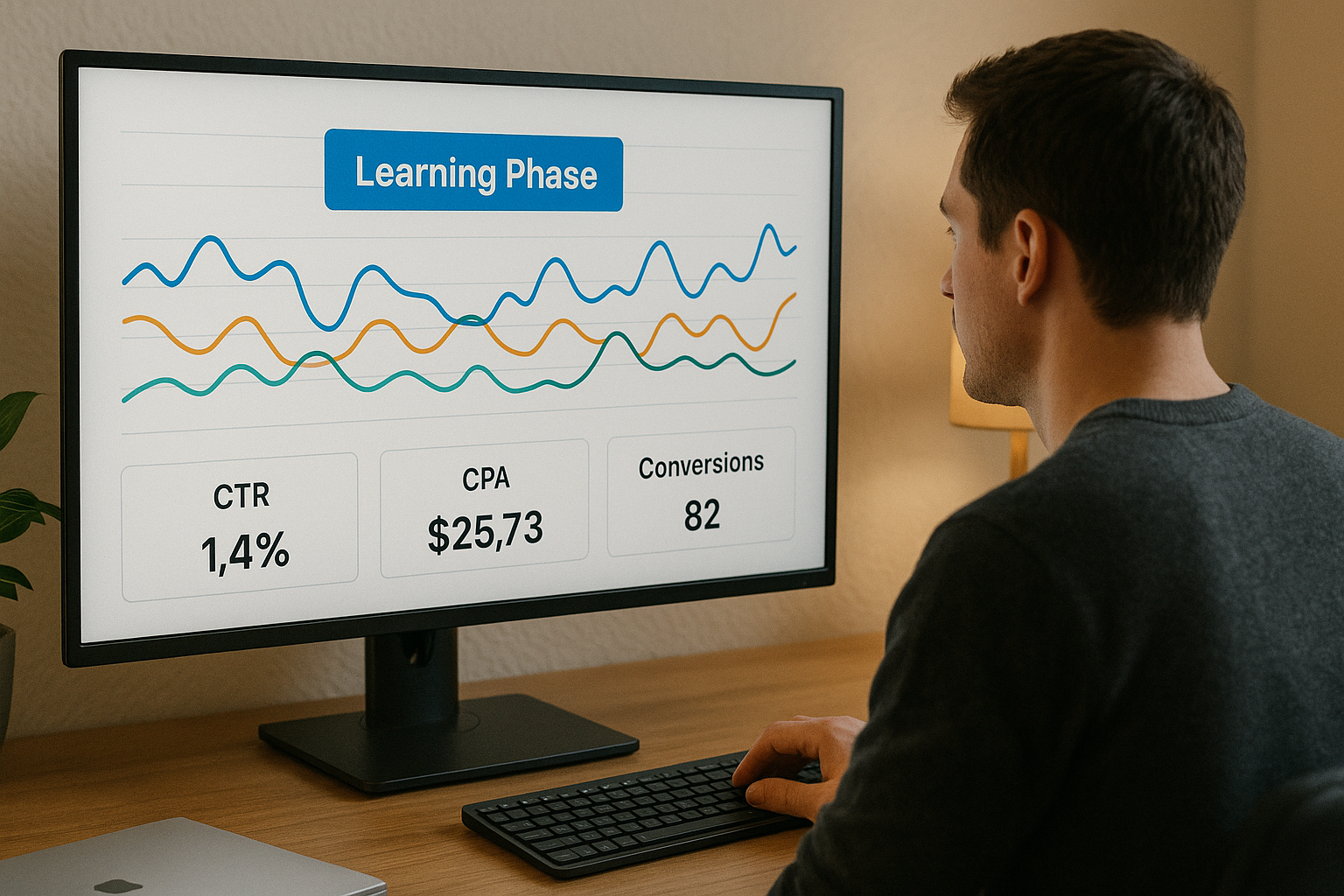When you launch a new campaign, ad platforms like Meta Ads and Google Ads don’t deliver full performance immediately. They first go through a process called the learning phase. Understanding this phase is crucial for anyone running paid traffic, because it explains why results might fluctuate in the beginning—and how to stabilize them faster. In this guide, you’ll learn what the learning phase is, how it works, and how to optimize during and after it.
What Is the Learning Phase?
The learning phase is the initial period after you launch or significantly change a campaign. During this time, the platform’s algorithm is collecting data and testing different audience segments, placements, and behaviors to understand how to best deliver your ads. It’s like the algorithm is “learning” how to get you the best results based on your objective.
When Does the Learning Phase Occur?
You’ll enter the learning phase whenever you:
- Launch a new campaign or ad set
- Make major edits (budget, targeting, creative)
- Duplicate an ad set
- Change optimization goals
Every time this happens, the platform needs to re-adjust and gather new performance data.
How Long Does the Learning Phase Last?
Typically, the learning phase lasts until the ad set reaches 50 optimization events (like conversions or clicks) within a 7-day window. This is not a fixed number—it varies based on your budget, event frequency, and competition. In general, expect it to take 3 to 7 days.
What Happens During the Learning Phase?
- Higher volatility in performance
- Fluctuations in CPA and CTR
- Inconsistent delivery
- Higher costs and slower optimization
It’s normal to see erratic results in this phase. The algorithm is experimenting with delivery, and not every impression will be efficient.
What Should You Do During the Learning Phase?
- Be patient: Let the algorithm gather enough data
- Avoid major edits: Frequent changes will reset the learning phase
- Monitor but don’t panic: Track performance, but give the ad room to stabilize
- Use stable creatives: Choose your best copy and visuals to avoid confusion
- Don’t scale yet: Wait until the ad set exits learning before increasing budget
How to Exit the Learning Phase Faster
- Raise budget slightly: More impressions help gather data quickly
- Use broad targeting: Give the algorithm flexibility to explore
- Choose high-frequency objectives: Optimize for events like landing page views or link clicks if conversions are rare
- Minimize unnecessary testing: Keep the ad set structure simple while in learning
What Happens After the Learning Phase?
Once the ad set gathers enough data, the algorithm begins delivering more consistently. You’ll see:
- Lower CPA
- More stable ROAS
- Optimized delivery
- Clearer performance trends
This is the point where you can start making data-driven decisions, like scaling budgets or duplicating winners.
Common Mistakes During the Learning Phase
- Making too many edits (which resets learning)
- Judging performance too early
- Killing ads before 50 events
- Launching too many tests at once
- Expecting instant ROI from cold traffic
Final Thoughts: Respect the Process
The learning phase is a normal and necessary step in every campaign. While it may feel uncomfortable to wait, it’s essential to let the algorithm learn before rushing to conclusions. Give your ads time, monitor calmly, and avoid changes that force resets. Once you pass the learning phase, your campaigns will be more efficient, profitable, and predictable.

